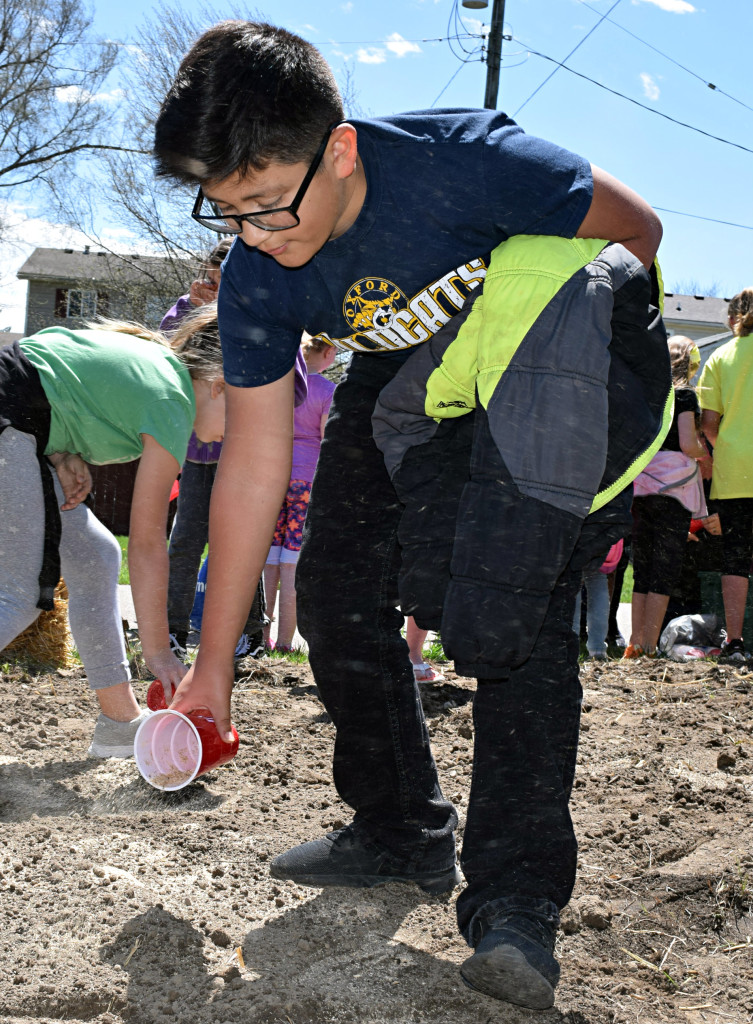
More than 100 Clear Lake Elementary fifth-graders learned about the importance of pollinating insects and hummingbirds while lending a helping hand during a field trip last Friday by planting a butterfly garden, just off the Polly Ann Trail.
While it wasn’t easy with 45 to 55 mile-per-hour winds blasting through the area, the persistent students managed to plant a variety of seeds which will soon sprout pollinator-attracting plants in a butterfly garden.
The 200- by 20-foot garden is located behind Evergreen Coffee and Bake Shop, where the Polly Ann Trail intersects Pleasant St. in Oxford.
The project was suggested by Polly Ann Trail Manager Linda Moran, who said she felt it tied in with the some of the school’s programs, like its Green Team program.
“The butterfly garden was in existence in that location some years ago and I thought it would be a good project to revitalize it,” said Moran. “We hope this will be a point of interest for trail-goers.”
The seed mix included nectar- and pollen-rich flowers like Liatris and Cosmos, according to Moran, along with plants that butterfly larvae feed on, such as dill, fennel and milkweed.
The supplies, including top soil, hay, signs and seed mix were all provided by nonprofit conservation organization Pheasants Forever.
Pheasants Forever is dedicated to the conservation of pheasants, quail and other wildlife through habitat improvements, public awareness, education and land management policies and programs.
After planting the seeds, the Clear Lake students then covered up the seeds with hay to prevent them from being eaten by birds.
Once these plants sprout, Monarch butterflies, chrysalis and larvae will be introduced to the garden by Debbie Jackson of Monarch Watch (Michigan and the Northeast Region).
Monarch Watch is an organization that aims to educate the public about the need to create habitats for monarchs to help promote their conservation.
Despite the garden’s name, Moran said these plants will likely attract an assortment of different insects and birds such as hummingbirds, wasps, bees and moths to help increase productivity in the pollination of local plant species.
“All pollinators are welcome,” she added.

Leave a Reply